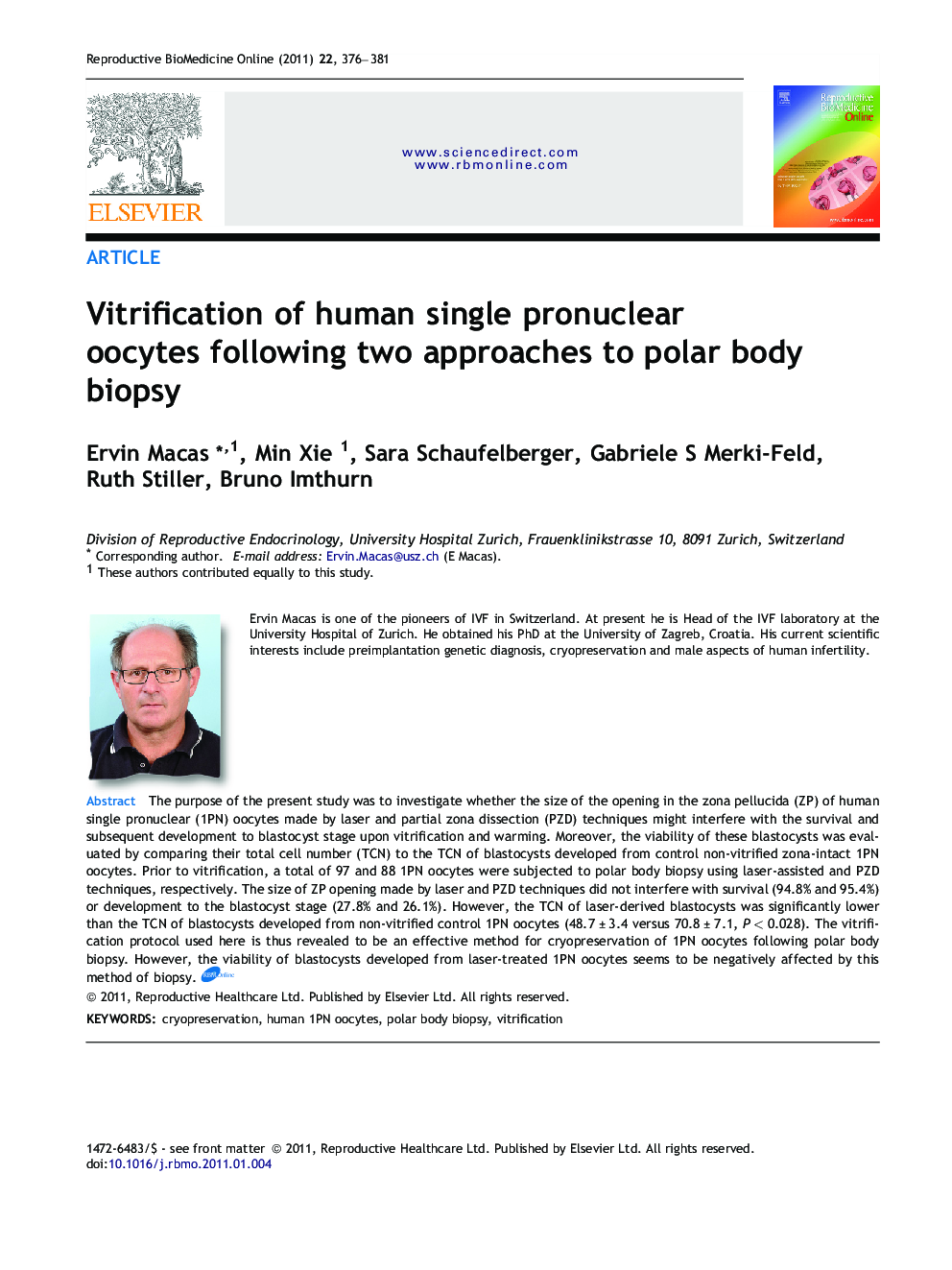| Article ID | Journal | Published Year | Pages | File Type |
|---|---|---|---|---|
| 3971731 | Reproductive BioMedicine Online | 2011 | 6 Pages |
Abstract
The purpose of the present study was to investigate whether the size of the opening made in the outer membrane (zona pellucida) of human single pronuclear (1PN) oocytes by mechanical dissection and laser techniques followed by polar body removal could hamper survival and development to the blastocyst stage upon vitrification and warming. Vitrification is a simple method of cryopreservation in which the intra- and extracellular solutions transform during cooling into a solid, glass-like substance. Moreover, in order to predict the viability of blastocysts developed from vitrified 1PN oocytes, their total cell number (TCN) was recorded and compared with the TCN of blastocysts developed from non-vitrified zona-intact 1PN oocytes. Prior to vitrification, a total of 97 and 88 1PN oocytes were subjected to polar body biopsy using the laser-assisted and mechanical method of dissection, respectively. Vitrification was also applied to 61 zona-intact 1PN oocytes. Following vitrification, no disparity in survival or further development to blastocyst stage was observed between either of the two biopsied groups and zona-inact 1PN oocytes, revealing that the vitrification protocol used here is an effective method for cryopreservation of 1PN oocytes following polar body biopsy. However, the TCN of blastocysts developed from laser-treated 1PN oocytes was considerably lower than the TCN of blastocysts developed from non-vitrified zona-intact 1PN oocytes (n = 46) suggesting that the viability of blastocysts developed from laser-treated 1PN oocytes was negatively influenced by this method of biopsy.
Related Topics
Health Sciences
Medicine and Dentistry
Obstetrics, Gynecology and Women's Health
Authors
Ervin Macas, Min Xie, Sara Schaufelberger, Gabriele S. Merki-Feld, Ruth Stiller, Bruno Imthurn,
